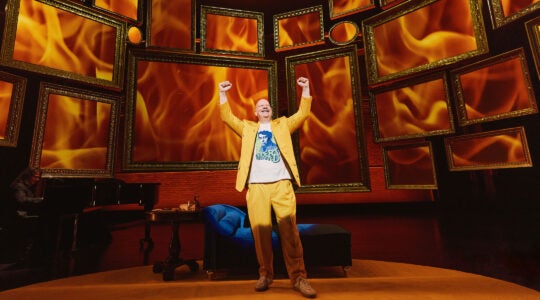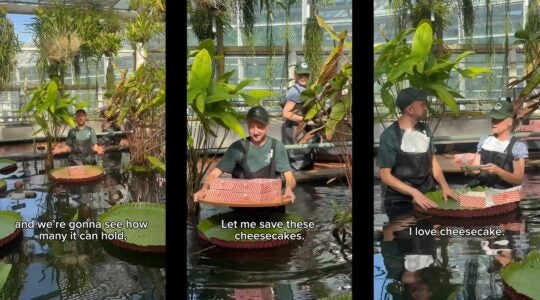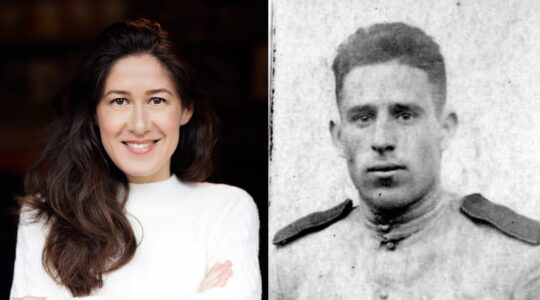Getting your Trinity Audio player ready...
Jack Mendelson remembers well the words of his principal teacher, the great cantor Israel Alter.
“He would always say, ‘Hazonos iz improvizatya,’ hazanut is improvisation,” Mendelson, himself a great cantor today, recalls with a laugh. “All the really great ones would go off on the pulpit, and the cantors who were really musically trained would improvise on the concert stage as well.”
For several years Mendelson has been putting that core value into delicious practice, recording and performing with Jewish-flavored jazz groups, most prominently the Afro-Semitic Experience. The Connecticut-based band will team up with Mendelson on Nov. 8 in what is being billed as “a spiritual tribal jam.” (7 p.m., Museum at the Eldridge Street Synagogue, 12 Eldridge St. [212] 219-0888, eldridgestreet.org.)
A spiritual tribal jam sounds like something you’d spread on your Sunday morning bagel, but ASE bassist-leader David Chevan has a rather more musical explanation for the term.
“It’s just someone’s way of saying we found a way to put a big, grooving beat behind hazanut,” he confides, “to merge the rhythmical African dance elements of our sound with cantorial music.”
For Chevan a lot of that process is about “finding sections [of the hazonos] with a single tonality [where] you can put a groove in and it won’t interfere with the spiritual nature of the hazanut.”
Because, in the end, it’s essential to remember that this is spiritual music, music beseeching or praising the Creator. That is a consideration that cuts two ways, as Chevan is well aware.
“The other side of it is that I’ve spent a lot of time with Abu Alvin Carter, Sr. and Baba David Coleman [two of the band’s percussionists] listening to African sacred music,” Chevan says. “One of the things that draws me to it is that it’s intensely spiritual. There’s so many ways where there are parallels [to the Jewish sacred traditions] that Baba has introduced me to, the urge is to call on those ideas, too. It gives me some sort of sense of direction artistically.”
What Chevan is seeking would seem to be a link between the music of the First Temple and Yoruba sacred drumming.
“If we can put our imaginations to work, what might pre-Christian music have sounded like?” he asks earnestly. “Was there dance in the Temple? Would it sound like Yoruba sacred music? I don’t know.”
The band’s next project, some of which will be on display in the upcoming concert, is something of a further exploration of that mysterious link, by way of the mystically oriented free jazz of the 1970s. In the past few years, there has been that Pharoah Sanders-Leon Thomas strain in the ASE’s live performances, but the band intends to draw on an even wider range of great jazz. Chevan name-checks John Coltrane, Horace Silver and “an Ellington piece from the 1930s that nobody plays.”
He adds, “It’s a kind of re-balancing. We’ve done a lot of Jewish music; this explores African-American jazz composers who’ve written about their spiritual desires.”
For Mendelson, a lifelong jazz fan, the opportunity to be part of such explorations is a kick.
“This gives me the freedom to do what I want [musically], and to dabble in a style that I love,” he says. “I even got to try my hand at some licks.”
And why not? After all, as a wise man once said, “Hazonos iz improvizatya.”
Jewish stories matter, and so does your support.
The New York Jewish Week brings you the stories behind the headlines, keeping you connected to Jewish life in New York. Help sustain the reporting you trust by donating today.




